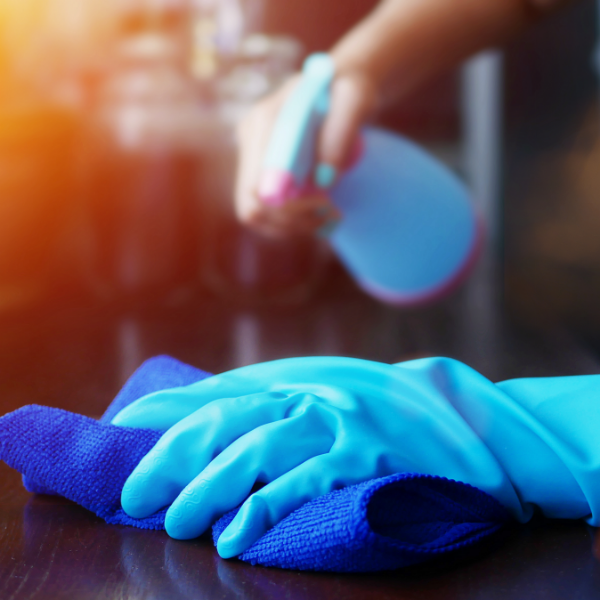The difference between disinfection and sterilization
Frequently cleaning your living room, kitchen, bathroom, or any other place is essential for avoiding various illnesses caused by germs, bacteria, and viruses in those places.
While disinfection and sterilization are different types of decontamination, they aim to eliminate enough germs so that the risk of infection or disease is extremely low.
In a nutshell, disinfection is the process of destroying or reducing harmful microorganisms, whereas sterilization is the process of killing all microorganisms. Read on to learn more about them and their differences.
Differences between disinfection and sterilization
Here is a short table explaining the difference between disinfection and sterilization based on their definition, method, types, and application.
|
Disinfection |
Sterilization |
|
|
Definition |
Eliminate most harmful microorganisms from surfaces or objects. |
Remove all microorganisms from surfaces or objects. |
|
Method |
Phenolic disinfectants, heavy metals, halogens (e.g., chlorine), bleach, alcohol, hydrogen peroxide, detergents, heating, and pasteurization. |
Heat, chemicals, radiation, high pressure, and filtration. |
|
Types |
Air disinfectants, alcohol, aldehydes, oxidizing agents, and phenolic. |
Steam, heating, chemical sterilization, radiation sterilization, sterile filtration. |
|
Application |
Decontaminate commonly used surfaces and objects. |
Sterilization is widely used for food, medicine, and surgical instruments. |
Disinfection
Disinfection eliminates unhygienic and harmful microorganisms from surfaces or objects. This process is usually done by applying the disinfectant surface spray, antiseptic liquid, and antiseptic trigger spray on the surfaces and objects.
Disinfectants are divided into two types:
1. Broad-spectrum
Broad-spectrum disinfectants can eliminate various microorganisms.
2. Narrow spectrum
Narrow spectrum disinfectants apply to only a selected variety of microorganisms and are easy to use, non-toxic, and comparatively affordable.
Types of Disinfectants
1. Air and Surface Disinfectants
The droplets of disinfectant spray are sprayed in the air or on hard or soft surfaces to eliminate infectious microorganisms.
2. Aldehydes
Significantly less effective on spores and fungus. Chemicals used in this are formaldehyde and glutaraldehyde.
3. Alcohol
Highly concentrated and capable of neutralizing viruses such as HIV, Hepatitis B, and Hepatitis C. A safe and affordable household example includes antibacterial hand sanitizer and disinfectant spray.
4. Phenolic
Liquid solutions for cleaning and rinsing the mouth, such as mouthwashes.
Sterilization
Sterilization completely eliminates all forms of microorganisms and pathogens, such as germs, fungi, bacteria, viruses, and spores.
While sterilization is usually a standard procedure commonly adopted in medical facilities such as veterinaries and hospitals, it is also widely used in businesses, institutes, companies, and homes.
Due to potential dangers and complications, most sterilization methods are only performed by trained and certified professionals.
Types of Sterilization
1. Steam
Steam is used for sterilization in autoclaves machines. The machine holds the objects for 3 minutes at a temperature of 121–134 °Celsius (250 °F - 273 °F) to eliminate all microorganisms.
2. Heating
Sterilization by heating includes heating, flaming, incineration, and boiling water to kill microorganisms in objects like glass and metals.
3. Radiation sterilization
This process includes electron beams, X-rays, gamma rays, or subatomic particles for sterilizing. Ideal for throwaway medical equipment, such as syringes, needles, and cannulas.
4. Sterile filtration
This method is used to sterilize clear liquids damaged by heat, radiation, or chemical sterilization.
5. Chemical sterilization
Ideal for objects such as biological materials, fiber optics, electronics, and plastics that can get damaged due to heat.
The chemical sterilization process uses chemicals like Ethylene oxide, ozone, Bleach, Phthalaldehyde, Hydrogen Peroxide, Dry sterilization process, Glutaraldehyde, Formaldehyde, Peracetic acid, and Silver used in varying degrees.
